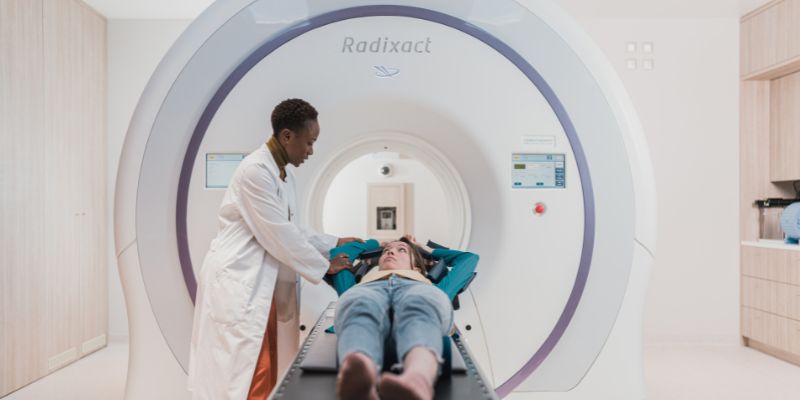The investigation of the genesis of ovarian cancer is of utmost importance. While complete avoidance of health problems may not always be possible, having knowledge about the elements that contribute to these issues empowers individuals to make informed choices about their well-being. Gaining comprehension of the etiology of this ailment would enable us to ascertain its associated risk factors and develop strategies for its timely detection and intervention. This comprehensive article aims to provide insight on the complex interaction of genetic, hormonal, environmental, and lifestyle factors in the pathogenesis of ovarian cancer.
The Impact on Women's Health
Ovarian cancer has a substantial impact on women's health due to its propensity for aggressiveness and its manifestation of subtle first symptoms. However, it is often detected at an advanced stage of development. In order to enhance results and enhance the quality of life for those affected by the illness, it is imperative to do comprehensive research and raise awareness. This is due to the considerable physical and mental burden it imposes, as well as the challenges connected with treatment.
Factors that Lead to Ovarian Cancer

The likelihood of acquiring ovarian cancer is contingent upon many factors. In order to effectively identify and address potential hazards in a timely manner, it is important to possess a comprehensive understanding of these many facets.
1. Genetic Factors
The chance of developing ovarian cancer is significantly elevated in those who possess mutations in the BRCA1 and BRCA2 genes. Women who possess certain genetic abnormalities are at a heightened risk of developing ovarian cancer, perhaps manifesting at a younger age. The identification of individuals harboring these mutations via the use of genetic counseling and testing facilitates the implementation of preventive interventions.
The likelihood of a woman having this cancer is increased many times when her mother or other close relative had this, especially among her female relatives. This observation suggests the presence of a genetic component. Although not all individuals with a familial predisposition to ovarian cancer will necessarily get the disease, it would be prudent to monitor such individuals closely and undertake precautionary measures as a precautionary measure.
2. Hormonal Factors
Females who begin menstruation at early age (i.e., 12) or have extremely late menopause face an increased susceptibility to the development of ovarian cancer. The heightened risk may be attributed to a woman's prolonged exposure to reproductive hormones throughout her lifetime.
The administration of hormone replacement therapy (HRT) has been associated with a heightened susceptibility to ovarian cancer. The probability of adverse effects is positively correlated with the duration and intensity of HRT administration. Women contemplating the use of HRT are advised to engage in a discussion with their healthcare providers on the potential benefits and drawbacks associated with this treatment.
3. The Impact of Aging
The influence of age on the development of ovarian cancer is well recognized. The age group with the biggest proportion of women diagnosed with ovarian cancer is between 63 and 67 years old. Ovarian cancer has the potential to affect women across all age groups, however, the likelihood of its occurrence increases as women age.
4. Reproduction Related Issues
Nulliparous women have a slightly elevated susceptibility to the development of ovarian cancer compared to women who have given birth. The hormonal fluctuations that transpire throughout the course of pregnancy and childbirth may potentially provide a certain degree of safeguarding.
According to some study findings, there exists a correlation between ovarian cancer and factors such as infertility and the use of reproductive therapy, including drugs that stimulate ovulation. Further investigation is necessary in order to get a comprehensive understanding of this connection, although the overall danger remains negligible.
Environmental and Lifestyle Factors

1. Dietary Factors
The potential for the development of ovarian cancer may be influenced by an individual's dietary choices. The consumption of processed and fast food, which is high in saturated fat, has been associated with an elevated risk of ovarian cancer. The consumption of a high-fat diet has been associated with the development of hormonal disturbances and inflammation, both of which have been implicated in the advancement of the illness.
Obesity is a significant risk factor for several malignancies, including ovarian cancer, among others. The proliferation of cancer cells might potentially be enhanced by hormones and growth factors that are produced by adipose tissue, with a special emphasis on the abdominal region. One effective strategy for reducing one's risk is to maintain a healthy weight via the adoption of a nourishing dietary regimen and regular engagement in physical activity.
2. The Association Between Cigarette Smoking and Ovarian Cancer
Existing research indicates that there may be an association between smoking and an increased likelihood of developing ovarian cancer; however, the precise nature of this interaction remains rather uncertain. Tobacco smoke is known to include carcinogenic substances that have the potential to be transported through the circulation and induce genetic mutations, hence elevating the likelihood of ovarian cancer development. In addition to mitigating the risk of developing lung cancer, abstaining from tobacco use may potentially have a protective benefit against the occurrence of ovarian cancer.
3. The Presence of Pollutants in the Environment
Extended use of talcum powder in the vaginal region is linked with ovarian cancer. Numerous studies have provided evidence indicating that talc particles have the ability to infiltrate the reproductive system, hence inducing inflammation and provoking alterations at the cellular level. The promotion of talc-free alternatives is advocated, notwithstanding the little probability of harm.
There is growing concern over the potential association between the occurrence of ovarian cancer and the use of certain pesticides and herbicides in agricultural and horticultural practices. Certain compounds included in these items have been associated with the disruption of hormonal activity and the potential to cause cancer. The use of protective garments and the adoption of organic agricultural techniques have the potential to mitigate exposure.
Conclusion
Understanding ovarian cancer causes is vital for informed decisions and prevention. Genetic factors, like BRCA mutations and family history, highlight the importance of genetic testing. Hormonal factors, including early menstruation and hormone therapy, emphasize hormone balance. Age, especially for women over 50, is significant. Reproductive factors, such as nulliparity and fertility treatments, shed light on hormonal influences.
Environmental and lifestyle factors like high-fat diets, obesity, smoking, talcum powder use, and pesticide exposure underscore risks. By grasping these factors, individuals can make informed choices, adopt healthier lifestyles, and consider genetic testing when necessary, all contributing to ovarian cancer prevention and early detection.




